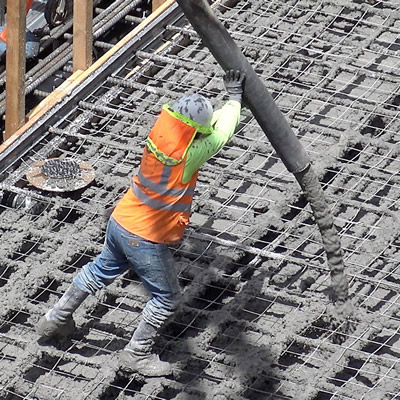Saskatchewan ranks tops in Canada in Fraser Institute mining survey
Four other Canadian provinces—Manitoba, Quebec, Newfoundland and Labrador and Yukon rank in top 10.

The Fraser Institute's annual Survey of Mining Companies rates 122 jurisdictions around the world based on their overall Investment Attractiveness Index. — Photo courtesy Fraser Institute
According to an annual global survey of mining executives released recently by the Fraser Institute, Saskatchewan is the top-ranked mining jurisdiction in Canada. That province came in second in the survey's overall Investment Attractiveness Index, behind Finland.
Four other Canadian jurisdictions—Manitoba (fourth), Quebec (sixth), Newfoundland and Labrador (eighth), and Yukon (ninth)—are in the top 10.
British Columbia, however, is further down the rankings. In the Investment Attractiveness Index, it ranks 28th out of 122 jurisdictions in 2014, compared with 16th out of 112 jurisdictions in 2013.
The Fraser Institute Annual Survey of Mining Companies 2014 rates 122 jurisdictions around the world based on their perceived geologic attractiveness and the extent to which responders to the survey believe government policies encourage exploration and investment (Policy Perception Index) to derive an overall index.
The Association for Mineral Exploration British Columbia (AME BC) disputes B.C.'s ranking. In a press release, AME BC president and CEO Gavin Dirom stated, “[B.C.'s] ranking within Canada, at 10th out of 12 provinces and territories compared to 7th out of 12 in 2013, is not consistent with actual investment in mineral exploration and deposit appraisal according to data from Natural Resources Canada.” According to quantitative data provided by Natural Resources Canada, Dirom said that B.C.’s share of mineral exploration investment more than tripled from six per cent in 2001 to 21 per cent in 2014. “At the same time, B.C.’s ranking among provinces in attracting mineral exploration and development investment has risen from fourth place in 2009 to second place, only behind Ontario, in 2013 and 2014,” Dirom said. Dirom said one of the best indicators of success in exploration is seeing discoveries move through to mine development. “In recent years, we have seen a number of new major metal mines constructed in our province, including Copper Mountain in 2011, New Afton in 2012 and Mount Milligan in 2013,” Dirom said. “Also, Red Chris is being readied for commercial operations, and the KSM and Kitsault mine development projects have received environmental assessment certificates.”
The survey contained questions on 15 policy variables, including taxation, regulations, security, infrastructure and the geological database.
Fraser Institute policy analyst Taylor Jackson said the main difference between Canadian jurisdictions in the survey was government policy. “All five jurisdictions have pure mineral potential in the top 20 jurisdictions worldwide,” he said. “Manitoba has the fifth most attractive mineral potential, Saskatchewan the 11th, Quebec 12th, B.C. 14th, and Ontario 17th.”
Based only on policy, however, the differences between Canadian jurisdictions is much greater, Jackson said. On the Policy Perception Index, Saskatchewan is ranked sixth, Manitoba ninth, Quebec 12th, Ontario 21st and B.C. 42nd. “Miners consistently indicate to us that their decision of whether to invest or not is based approximately 60 per cent on mineral potential and 40 per cent on policy,” Jackson said. “It seems that the relatively attractive mineral potential of provinces like B.C. and Ontario cannot overcome their poor scores on policy.”
Jackson said the 2014 survey had a few surprises for Fraser Institute researchers.
“I think the halt in the decline and rise back into the global top 10 for Manitoba and Quebec were a bit surprising,” he said. “I think B.C.’s downgrade was a small surprise. We suspected that there would be poorer performance in B.C. resulting from the recent Supreme Court of Canada decision on Aboriginal title, but we didn’t know how far they were going to drop.”
According to the survey, Finland is the world's most attractive jurisdiction for mining investment. In addition to having an abundance of mineral potential, Finland earned high scores for having clear regulatory guidelines, an effective tax regime and a robust labour market, said Fraser Institute director of the survey of mining companies Kenneth Green. "This is the fifth consecutive year that Finland has ranked among the global top 10 for mining investment,” Green said. “The confidence miners show in Finland proves it's possible to enact sound environmental protections and still maintain a successful mining industry."
Jackson says the Fraser Institute has done the mining survey since 1997, when it included all Canadian provinces and territories. “We now have enough responses to rank 122 jurisdictions around the world,” he said.
Fraser Institute researchers contacted mining executives and managers from all around the world. “In total we received 485 responses,” Jackson said. “Fifty-seven percent of the respondents were either a company president or vice-president.”
The survey was conducted between August 26 and November 15, 2014. Exploration budgets reported by companies participating in the survey totalled US $2.7 billion in 2014, down from US $3.2 billion in 2013.




